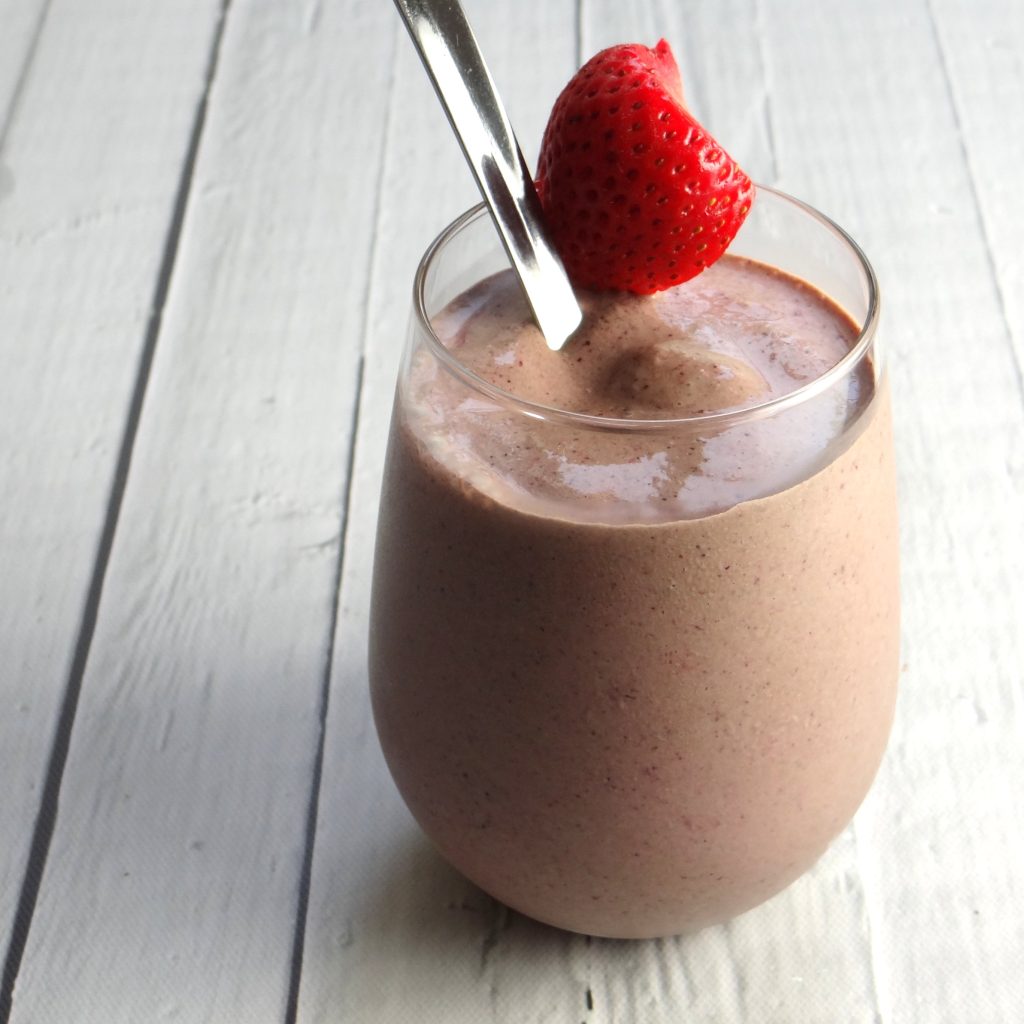
“When you understand how and why blood sugar balance matters, and you begin to fix it, you create a stronger foundation for healing.”
~ Dr. Datis Kharrazian
The Pros & Cons of Smoothies
Most people choose smoothies because they think they’re a healthy alternative to fast food. The problem is that liquid “meals” like these can hit our bloodstream as sugar blasts, which isn’t healthy for anyone but especially people with autoimmune disease. The worst offenders are going to be the store-bought smoothies that sometimes add sugar alongside all the fruit. For example, Smoothie King’s Caribbean Way contains 83 grams of natural sugar (from banana, strawberries, and papaya juice) + 50 grams of added sugar (turbinado) for a total of 133 grams of sugar. Let’s do the math on that: 4 grams = 1 teaspoon of sugar, so that smoothie has 33 teaspoons of sugar (which is 2/3 cup). Keep in mind this is their small 20-ounce size, which most people don’t buy. For their large size, double that.
What about homemade smoothies? Most of us know better than to add sugar, but many smoothie recipes contain a lot of fruit and fruit juice, which can still send us on a blood sugar rollercoaster. Yet when made wisely and consumed as part of a healing diet, smoothies can offer health benefits, too. The Wahls Protocol recommends that we eat 3 cups of greens and 3 cups of brightly colored fruits and vegetables every day for optimal health. Those bright colors represent antioxidants, and each color represents a different type. Greens also contain antioxidants, along with vitamins A, C, K, calcium, magnesium, and folate. These nutrients support our bodies in multiple ways, from reducing inflammation to supporting our natural detox pathways. While we don’t want to drink all our food, smoothies can make it a little easier to meet our nutrition goals. In addition, some autoimmune diseases have symptoms that make smoothies even more appealing. Multiple sclerosis and mysthenia gravis can include the symptom of chewing fatigue. And if you have an autoimmune disease that impacts your digestive tract, blended foods might be easier to digest. Below, I share 5 ways to maximize the pros, minimize the cons, and offer my favorite healthy smoothie recipe.
Tip #1: Always include a healthy fat.
Some vitamins in fruits and vegetables are fat-soluble, which means you need to eat them with dietary fat in order to absorb all of their nutrition. Healthy fats are also important nutrients themselves. They’re essential to brain health, skin health, eye health, immune health, gut health, fertility, body temperature regulation, and blood sugar regulation. So, maximize the nutrition in your smoothie by adding some good fats. Avocado and coconut milk are excellent choices.
Tip #2: Add some collagen protein.
Collagen is a building block for every cell in our body, and it’s used by our intestinal cells to heal and replenish. Since leaky gut is one of the root causes of autoimmune disease, anything we do to help heal leaky gut benefits autoimmune health as well. Another benefit of adding collagen protein (and healthy fats) is that they both help moderate the blood sugar impact of smoothies. They also make them more satiating, so we’re less likely to be hungry an hour later. That said, collagen isn’t a complete protein, because it doesn’t contain all the essential amino acids that meat and seafood contain. However, it does contain beneficial amino acids that are missing from most cuts of meat and seafood. These are proline and glycine, and they play an important role in brain function, heart health, blood sugar regulation, detoxification, digestion, and wound repair. Collagen is also water soluble, so it blends easily into a smoothie.
Tip #3: Choose low-glycemic fruits.
You may have heard these terms in the diabetes community. The glycemic index (GI) measures how fast carbohydrates raise blood sugar compared to pure glucose. However, glycemic load (GL) is the better number to watch, because it takes serving size into account and is therefore a more accurate reading. When it comes to choosing fruits for your smoothie, ideally choose those with a GL of 10 or less. Here’s a database where you can quickly search for the GL of a particular fruit. (Be sure to look at the column all the way to the right, labeled GL). Also choose fruit that’s brightly colored all the way through, to get that antioxidant boost. Here are some excellent smoothie fruit choices: blackberries, blueberries, raspberries, strawberries, cherries, kiwi, nectarines, peaches, and mango. Choose a different blend each time. P.S. Bananas are often included in smoothie recipes because they add a nice texture and natural sweetness. Their GL varies greatly depending on ripeness (from 6-16). This is OK, but just be aware of the amount of banana you add. In my recipe below, I include half a small banana, prioritizing higher amounts of the other ingredients.
Tip #4: Add some greens.
The whole idea of a healthy smoothie is to optimize nutrition, and green leafy vegetables are a great way to do that. Choose a different variety each time, because all foods have a unique nutrient profile. Some greens like kale, collards, arugula, and watercress are also cruciferous vegetables. This is the food group known for containing cancer-fighting compounds that support our bodies’ detox pathways. Arugula is the green most similar to its wild ancestor, making it higher in antioxidant activity than most other greens (although all greens are nutritious). And don’t forget the greens that come attached to root vegetables. These are often edible and nutrient-rich as well, including turnip greens, beet greens, radish greens, and carrot greens.
Tip #5: Drink it alongside a meal.
There are two reasons for this recommendation. One is that liquid food is digested more quickly than solid food and hits the bloodstream faster. Eating food with your smoothie balances out this effect, allowing the energy you get from your food to be slow-released as opposed to experiencing an energy surge and crash. Second, chewing stimulates digestive enzymes, which is essential to absorbing as much nutrition as possible from our food. If you do choose a smoothie as a meal substitute, make that a rare occurrence rather than a regular habit, and take a moment to breathe deeply and relax before drinking it, savoring the flavor. Digestion actually starts in the brain, so that ritual also stimulates digestive enzymes.
Delicious, Healthy, Smoothie Recipe
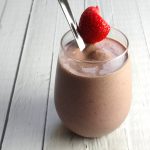
Berry Green Avocado Smoothie (Paleo, AIP, GAPS, Wahls, Whole30)
- Total Time: 10 minutes
- Yield: 1 Serving
Ingredients
- 1 cup mixed frozen berries (raspberries, blueberries, strawberries, etc.)
- 1/2 avocado
- 1/2 small banana
- 1 cup greens (kale, arugula, spinach, etc.)
- 1 Tbsp. collagen powder
- 1 Tbsp. fresh lemon juice
- 1/2 cup water
Instructions
- In a high-speed blender, grind the frozen berries into a powder.
- Add the remaining ingredients, and use a slim spatula to wipe down the sides of the blender and mix the water with the ingredients. Then blend until smooth.
Notes
- If your blender struggles with frozen fruit, feel free to substitute fresh berries instead, or just defrost the frozen berries slightly before blending.
- If you are used to very sweet smoothie recipes, this one won't taste as sweet, but I love the flavor. One goal of a healing diet is to slowly wean ourselves away from our sweet tooth and eat a wider variety of nutrient-dense foods, until our bodies start to crave those instead.
- Change up the berries and greens you use each time you make this recipe. Every food has its own unique nutrient profile, and the more diverse our diet, the deeper our nutrition.
- For the collagen powder, choose grass-fed. Great Lakes is my favorite brand.
- Optional: If you've reintroduced nuts back into your diet, Dr. Terry Wahls recommends adding 1 brazil nut to your smoothie. It's rich in selenium, which is essential to many body processes, including detoxification and hormone balance.
- Prep Time: 10 minutes
- Category: Side Dish
- Method: No-Cook
You May Also Be Interested In

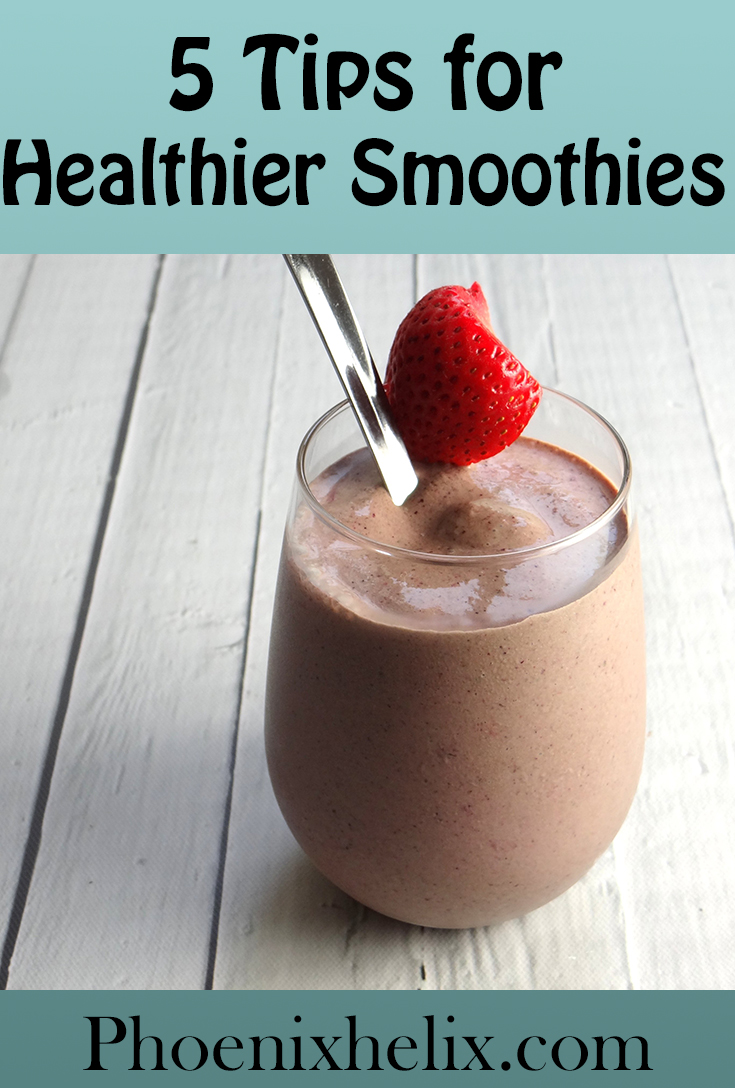
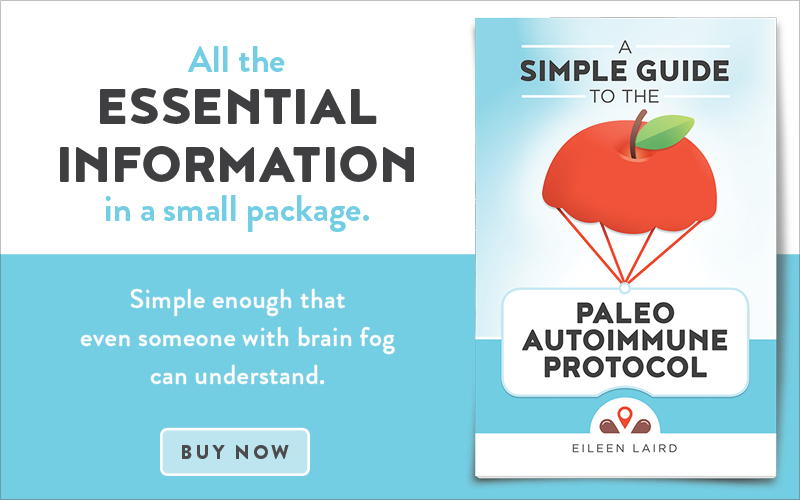
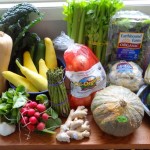


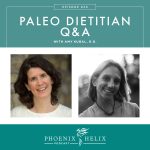
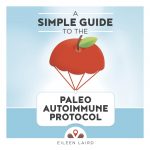


Ever since I got a stick blender, my old blender has been in a box. Maybe it’s time to get it out again – with the really hot humid weather, I always feel more like drinking than eating and sometimes don’t eat very much in a day. I did see Tip #5 about drinking a smoothie with a meal which is very good advice, but I think even a smoothie by itself would be better than not eating at all, especially if I make it a not-too-sweet and nutrient-dense one. Kind of feel like making one right now, but I have to go out and do evening chores 🙂
Definitely better than not eating at all. If smoothies will increase your calories and nutrition, that’s a wonderful use of them.
I wonder what you think of the Fab Four Smoothie template from the blog & book Be Well By Kelly.It is in no way AIP compliant, but one can use the template for AIP:
Protein (20g min)
Fiber (10g min)
1 Tbsp. Fat
Handful Greens
1/4 Cup Fruit + Superfoods
Liquid.
I try to come close to it using lots of kale & blackberries to bump up the fiber. For liquid I use coconut water.
That sounds pretty balanced, especially if you’re using whole foods as opposed to fiber powders. Regarding the so-called superfoods, things classified as that often stimulate the immune system so I wouldn’t go out of your way to add those. Fruits and vegetables are super enough.